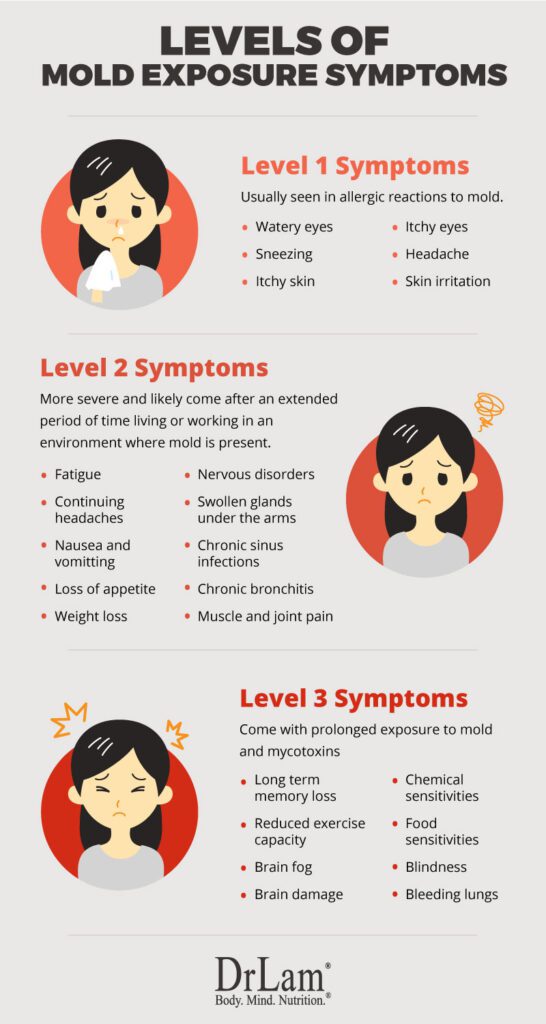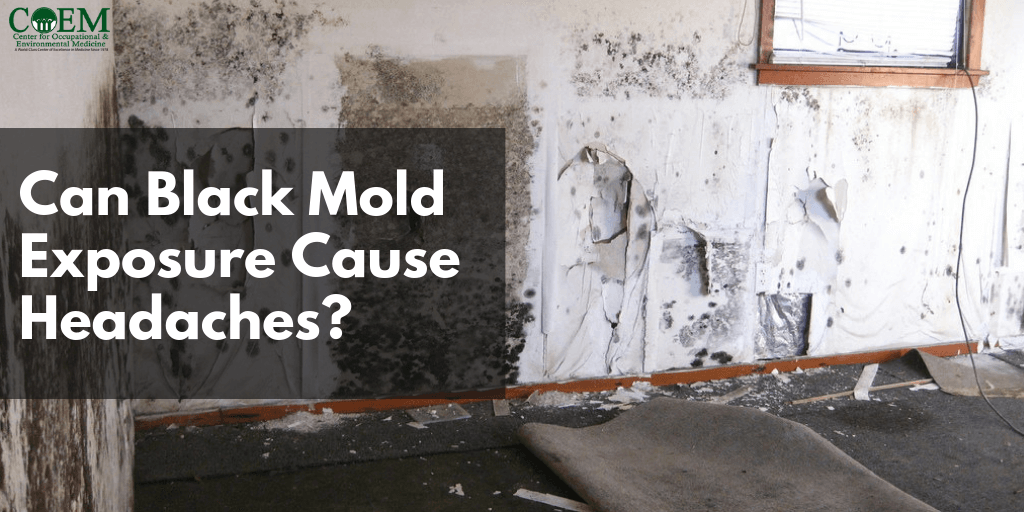Hey there! Have you ever wondered if headaches could be a symptom of mold exposure? Well, in this article, we’re going to delve into the relationship between mold and headache symptoms. Mold is a common problem in many homes and workplaces, and it can have a range of health effects. Many people experience headaches as a result of mold exposure, and it’s important to understand why this happens and what you can do about it. So, if you’re someone who frequently suffers from headaches and suspect that mold might be the culprit, keep reading to learn more about the link between mold and headache symptoms.
If you’re curious to know whether your headaches could be related to mold exposure, this article is for you. We’ll explore the various ways in which mold can trigger headaches and the symptoms you need to watch out for. Additionally, we’ll discuss the potential long-term effects of mold exposure on your health and how to detect and prevent mold growth in your surroundings. Mold can be a sneaky problem that often goes unnoticed until it starts affecting your health, so understanding the connection between mold and headache symptoms is crucial in finding a solution. Stay tuned for more information on this interesting topic!

What is Mold Exposure
Definition of mold exposure
Mold exposure occurs when individuals come into contact with airborne mold spores or through direct contact with mold-infested materials. Mold, a type of fungus, can grow indoors and outdoors in damp, warm, and humid environments. When mold spores are inhaled or ingested, they can cause a range of health issues, including allergic reactions and respiratory problems.
Common sources of mold exposure
Mold can thrive in various areas of a home or building, such as basements, bathrooms, and areas with water damage. Common sources of mold exposure include:
-
Poor ventilation: Insufficient air circulation can lead to increased humidity and moisture, creating an ideal environment for mold growth.
-
Water leaks: Leaky pipes, roof leaks, or water seepage can provide the necessary moisture for mold to grow.
-
Flooding: When a home or building experiences flooding, mold can quickly develop within 24-48 hours if not properly dried and treated.
-
High humidity: Areas with consistently high humidity levels, such as humid climates or poorly ventilated spaces, are more prone to mold growth.
-
Damp materials: Mold can easily grow on damp materials like paper, carpeting, upholstery, and even wood.
Types of Mold
Different types of mold
There are numerous types of mold that can be found indoors and outdoors. Some common indoor molds include:
-
Stachybotrys chartarum (black mold): This type of mold is often associated with water damage and can produce mycotoxins, which may cause health problems in certain individuals.
-
Aspergillus: Aspergillus is a common mold that can be found in households. It can cause respiratory issues and allergic reactions.
-
Penicillium: Penicillium is a mold that can grow on various surfaces, including food. Certain species of penicillium may produce mycotoxins and cause respiratory problems.
-
Alternaria: Alternaria is a common outdoor mold that can also be found indoors. It is often associated with allergic reactions, particularly in individuals with a known sensitivity to mold.
Symptoms of mold exposure
Mold exposure can lead to a range of symptoms, depending on an individual’s sensitivity and the level of mold present. Some common symptoms of mold exposure include:
-
Allergic reactions: These can include sneezing, coughing, itchy or watery eyes, and a runny or stuffy nose.
-
Respiratory issues: Mold spores can irritate the respiratory system, leading to symptoms such as wheezing, shortness of breath, and chest tightness.
-
Skin irritation: Some individuals may develop skin rashes or irritation when in contact with mold.
-
Headaches: Headaches can also be a symptom of mold exposure, especially when individuals have a sensitivity to mold.
Symptoms of Mold Exposure
Common symptoms of mold exposure
In addition to headaches, there are several other common symptoms of mold exposure. These may include:
-
Fatigue: Mold exposure can cause persistent fatigue and a lack of energy.
-
Sinus problems: Mold spores can irritate the sinuses and lead to nasal congestion, sinus pressure, and sinus infections.
-
Throat irritation: Sore throat, hoarseness, and coughing can occur as a result of mold exposure.
-
Digestive issues: Some individuals may experience stomach pain, diarrhea, or nausea after mold exposure.
Specific symptoms of mold exposure related to headaches
Headaches can be a specific symptom of mold exposure, especially for individuals who are sensitive to mold. These headaches are often described as:
-
Pounding or throbbing: Mold-induced headaches can be accompanied by a sense of pulsating or pounding pain.
-
Pressure or tightness: Many individuals with mold-induced headaches report feeling pressure or tightness in their head.
-
Location: Mold-related headaches often occur in the frontal or temporal regions of the head.
-
Worsening with exposure: These headaches may worsen when individuals are in mold-affected environments or after exposure to mold spores.
Headaches and Mold
How mold exposure can cause headaches
Mold exposure can lead to headaches through several mechanisms:
-
Allergic reaction: Mold spores can trigger an allergic reaction in individuals with mold sensitivities. Inflammation and immune responses associated with allergies can manifest as headaches.
-
Mycotoxin exposure: Some types of mold, such as black mold, produce mycotoxins. These toxic substances can affect neurological function and contribute to the development of headaches.
-
Sinus irritation: Mold spores can also irritate the sinuses, leading to inflammation and congestion. This sinus irritation can result in headaches.
The link between mold and headache symptoms
Research suggests a link between mold exposure and headaches, particularly in individuals who are sensitive to mold or have underlying conditions such as allergies or asthma. The exact mechanisms by which mold triggers headaches are still not fully understood, but it is believed to involve inflammation, immune responses, and neurotoxic effects of mycotoxins.

Mold-Induced Headaches
Characteristics of mold-induced headaches
Mold-induced headaches may have specific characteristics that can help differentiate them from other types of headaches:
-
Frequency: Mold-induced headaches can occur on a regular basis, especially when individuals are exposed to mold or in mold-contaminated environments.
-
Duration: These headaches can last for several hours or even persist for days, especially if individuals continue to be exposed to mold.
-
Intensity: Mold-induced headaches can range from mild to severe, often presenting as a pulsating or throbbing pain.
Duration and intensity of mold-induced headaches
The duration and intensity of mold-induced headaches can vary depending on the individual’s sensitivity to mold, the level of mold exposure, and other factors such as overall health. Some individuals may experience mild, intermittent headaches, while others may suffer from severe, persistent headaches that significantly impact their daily life.
Diagnosing Mold-Induced Headaches
Methods for diagnosing mold-induced headaches
Diagnosing mold-induced headaches can be challenging as they share similar symptoms with other types of headaches. However, there are several methods that can help determine if mold exposure is contributing to headaches:
-
Medical history: Sharing information about potential mold exposure, symptoms, and their relationship to specific environments can provide valuable insights for healthcare professionals.
-
Physical examination: A physical examination, including an examination of the sinuses, may help identify signs of irritation or inflammation related to mold exposure.
-
Allergy testing: Allergy testing can help determine if an individual has a sensitivity to mold or other allergens that may be triggering their headaches.
-
Environmental assessment: Consulting with a mold remediation specialist to assess the indoor environment for mold can help identify potential sources of mold exposure.
Consulting with a healthcare professional
If you suspect that your headaches are related to mold exposure, it is important to consult with a healthcare professional. They can help determine the underlying cause of your headaches and develop an appropriate treatment plan. A healthcare professional may refer you to an allergist or an environmental specialist for further evaluation and guidance.

Treating Mold-Induced Headaches
Eliminating the source of mold
To treat mold-induced headaches effectively, it is crucial to eliminate the source of mold. This may involve:
-
Fixing any water leaks: Repairing any sources of water leaks or moisture intrusion can help prevent mold growth.
-
Improving ventilation: Increasing airflow and ventilation in your home can help reduce moisture levels and inhibit mold growth.
-
Cleaning and removing mold: Properly cleaning and removing mold-infested materials is essential in preventing ongoing mold exposure.
-
Using mold-resistant materials: When renovating or building, using mold-resistant materials can help prevent future mold growth.
Medications for treating mold-induced headaches
In some cases, medication may be necessary to manage the symptoms of mold-induced headaches. Over-the-counter pain relievers, such as ibuprofen or acetaminophen, can help alleviate mild headaches. For more severe headaches, a healthcare professional may prescribe stronger pain medications or recommend preventive treatments, such as migraine medications or allergy medications, depending on the individual’s specific needs.
Preventing Mold Exposure
Tips for preventing mold growth
Preventing mold growth in your living environment is essential in minimizing the risk of mold-induced headaches and other health issues. Here are some tips to prevent mold growth:
-
Keep humidity levels in check: Maintaining humidity levels below 50% can help inhibit mold growth. Using dehumidifiers or air conditioners can help regulate humidity.
-
Properly ventilate areas prone to moisture: Ensuring proper ventilation in areas like the bathroom, kitchen, and laundry room can help prevent moisture buildup.
-
Promptly address water leaks: Repair any leaks or water damage as soon as possible to prevent mold from developing.
-
Dry wet items promptly: If materials get wet, such as after a spill or flooding, ensure they are thoroughly dried within 24-48 hours to prevent mold growth.
Maintaining a clean and dry living environment
Regular cleaning and maintenance can also help reduce the risk of mold growth:
-
Clean and dry regularly: Routinely clean and dry surfaces prone to moisture, such as showers, sinks, and countertops.
-
Use mold-resistant products: Choose mold-resistant materials like mold-resistant drywall or paints when renovating or building.
-
Properly ventilate when cooking or showering: Use exhaust fans or open windows to reduce moisture when cooking or taking hot showers.
-
Monitor indoor humidity: Regularly check and monitor indoor humidity levels using a hygrometer to ensure they remain within a healthy range.

Seeking Professional Help
When to consult a professional
If you are experiencing persistent or severe headaches that you suspect are related to mold exposure, it is important to consult a healthcare professional. Additionally, consider seeking professional help for mold remediation if:
-
You have identified visible mold growth in your home.
-
You have experienced a significant water leak or flooding event.
-
You are unable to eliminate the source of mold on your own.
Finding a mold remediation specialist
When seeking professional help for mold remediation, it is crucial to find a reputable and experienced mold remediation specialist or company. Look for professionals who are certified and knowledgeable in handling mold-related issues. They can assess the extent of mold growth, provide remediation services, and offer guidance on preventing future mold problems.
Conclusion
Headaches can indeed be a symptom of mold exposure, particularly for individuals who are sensitive to mold or have underlying conditions such as allergies or asthma. Mold-induced headaches can vary in intensity and duration, and their link to mold exposure is believed to involve inflammation, immune responses, and neurotoxic effects of mycotoxins. To prevent and treat mold-induced headaches, it is crucial to eliminate the source of mold, consult with healthcare professionals for proper diagnosis and treatment, and take preventive measures to prevent further mold growth. By understanding the relationship between mold and headache symptoms, individuals can take the necessary steps to protect their health and well-being in mold-contaminated environments.
